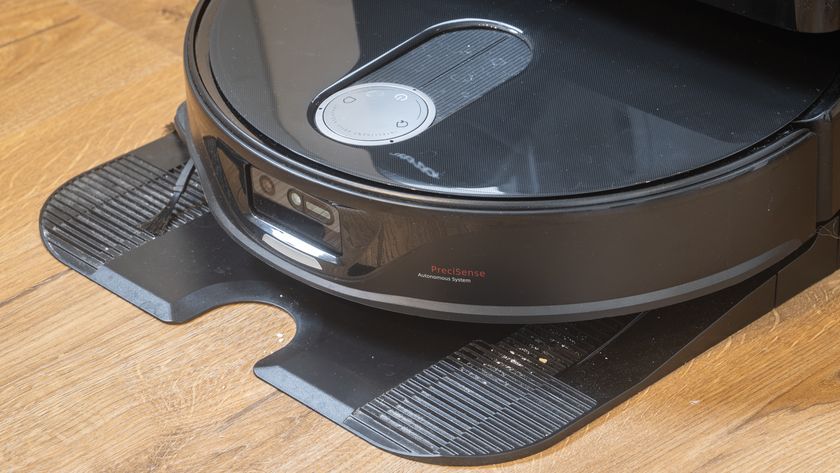The most common web design myths busted
Misconceptions in web design and development uncovered

The moment you start working as a web designer or web developer, you're told 'do this' and 'don't do that'. Official and unofficial rules abound.
You soon internalise them and start passing them on to others, either consciously or subconsciously. But here's the bad news: not all of this advice is correct.
Some of these firmly held 'truths' are based on outdated assumptions, and some were just wrong to start with. It's time to take a step back and reassess some of the myths and misconceptions circulating in the world of web design.
With our sword of truth and shield of keen analysis, we'll begin to break the cycle of bad advice and free our minds from outmoded dogma.
We'll start at the very beginning of the design process, when you're investigating potential audiences. And our first myth is, in the words of standards guru Eric Meyer, "the idea that global browser statistics matter in the slightest". In fact, he points out, "What matters are the browsers visiting your site."
By way of illumination, Meyer notes that a recent client had 14 per cent IE 5.01 usage – so Microsoft's ancient browser suddenly became significantly more important than global statistics would otherwise suggest. But even when you're creating a totally new site, Meyer recommends consigning aggregate browser stats to history. "Develop in a standards oriented way, ensure a site's readable – if not beautiful – in older browsers, and be satisfied with a job well done," he advises.
The wrong path
Get daily insight, inspiration and deals in your inbox
Sign up for breaking news, reviews, opinion, top tech deals, and more.
When it comes to actually working on your site, one of the biggest and most oft-repeated myths is attractive in its simplicity: that no web page should ever be more than three clicks from the homepage.
Clearleft MD Andy Budd reckons it's nonsense, but can see how it came about. "It's an over simplification of the idea that navigational structure should be as simple and straightforward as possible," he explains. "That in itself is a good maxim, but to communicate this concept, somebody decided to set an explicit, entirely arbitrary number."
With the modern web, though, such a restriction is ludicrous and outdated, Budd contends. The number of clicks required to get to a specific piece of information depends on various things, including the breadth, depth and nature of the information, and user usage patterns. "However, the myth nonetheless clings on in the perception of many web design novices," he says.
Budd similarly decries the much-propagated 'rule' that navigation should only contain about seven items. Again, the empiric justification for this is paper-thin, he argues. "It came about because of research showing that people can typically hold only seven items within short-term memory. From this, a myth surfaced saying navigation should contain no more items than this magic number. But short-term memory has nothing to do with navigation menus, and so has no relevance to the number of items in your menu!"
The three-second rule
In fact, arbitrary numbers seem to be a theme of many widely held web design myths. For instance, there's the old chestnut that you've only three seconds to keep a user on your site.
"This is based on studies from around 2000 that showed how rapidly users made their minds up," explains Cajzer. "But users are now more sophisticated and experienced, meaning they're more relaxed when it comes to deciding if a site's worth exploring."
The prevalence of search has also changed habits, meaning there's a good chance most users visit a site looking for something specific. Rather than battering users with a barrage of components designed to grab attention, you're better off thinking about what your users want to find. More controversial is the whole subject of 'the fold'.
Designers often hear that users hate to scroll and therefore everything important should be placed above this 'magic' line. "This request often comes from clients, sometimes taking into account the lowest common denominator screen resolution, batting you back to 800x600," complains Kleber's Tom Muller. "This results in content being crammed into a small space, and a convoluted, confusing hierarchy of content."
But Muller argues that, while broadsheet newspapers may put important items above a literal fold, the web doesn't have the same fixed size restrictions, adding that modern sites like blogs have made users increasingly aware of scrolling almost by default. "Anyway, you wouldn't just read the top of a newspaper," he adds.
He recommends instead that you design website content that cascades down intelligently. "Lead the visitor down the page, and inform clients that scrolling is intrinsic to the medium," he advises.
So should the importance of the fold be classed as myth? Clearleft's Cennydd Bowles is not so sure. Although rigidly adhering to the fold is foolish, he says, it shouldn't be dismissed entirely.
"There's almost a myth of the myth of the fold," he argues. "Some designers use it to convince clients to accept a design, and, as such, it can be badly misused. We're talking about design principles like visual hierarchy, closure and figure-ground. These are as relevant as ever, and sometimes that does mean we should consider the top of the screen as a far higher priority than the bottom."
This advice is as much about usability than layout, which leads us nicely into another widely held and damaging myth – that usable sites are boring.












